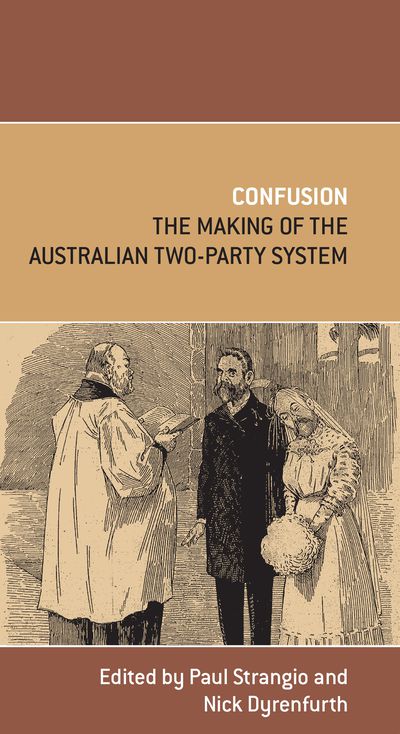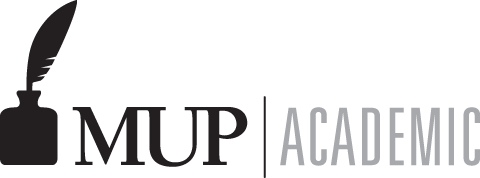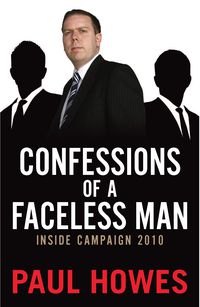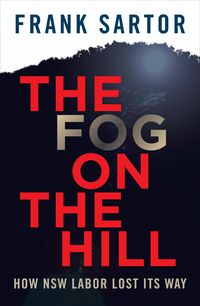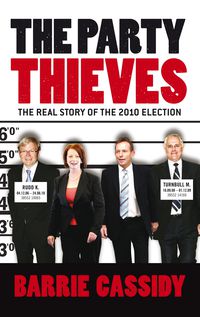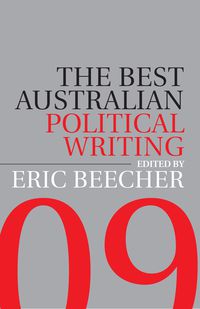Confusion
The Making of the Australian Two-Party System
Paul Strangio (editor), Nick Dyrenfurth (editor)
Ebook
Out of stock
$31.99
$31.99
$31.99
$31.99
$31.99
$31.99
$31.99
$31.99
$31.99
$31.99
$31.99
Member discount
As an MUP member you get 40% off the RRP of all print books.
Member discount
As an MUP member you get 40% off the RRP of all print books.
Member discount
As an MUP member you get 100% off the RRP of all print books.
Member discount
As an MUP member you get 25% off the RRP of all print books.
Member discount
As an MUP member you get 25% off the RRP of all print books.
Member discount
As an MUP member you get 25% off the RRP of all print books.
Member discount
As an MUP member you get 40% off the RRP of all print books.
Member discount
As an MUP member you get 10% off the RRP of all print books.
Member discount
As an MUP member you get 35% off the RRP of all print books.
Member discount
As an MUP member you get 40% off the RRP of all print books.
Confusion
The Making of the Australian Two-Party System
Paul Strangio (editor), Nick Dyrenfurth (editor)
In Confusion, some of Australia's foremost political historians including Judith Brett and Stuart Macintyre revisit the seminal moment when liberals threw in their lot with the conservatives
In May 1909, Alfred Deakin, the radical liberal doyen, struck an agreement for a controversial 'fusion' with the anti-Labor factions, with the new grouping later adopting the name 'Liberal Party'. After a heated campaign, Labor won the 1910 election, forming the first majority government in the history of the Commonwealth. The Australian party system; as we still largely know it one hundred years on; had crystallised.
How had this occurred? For most of the previous decade Labor and Deakin had been allies. Was the anti-Labor alliance the inevitable outcome of middle-class men rallying against the growing electoral might of the workers' party? What were the long-term consequences for both sides of politics? With Labor in power federally and in all but one…
In Confusion, some of Australia's foremost political historians including Judith Brett and Stuart Macintyre revisit the seminal moment when liberals threw in their lot with the conservatives.
In May 1909, Alfred Deakin, the radical liberal doyen, struck an agreement for a controversial 'fusion' with the anti-Labor factions, with the new grouping later adopting the name 'Liberal Party'. After a heated campaign, Labor won the 1910 election, forming the first majority government in the history of the Commonwealth. The Australian party system; as we still largely know it one hundred years on; had crystallised.
How had this occurred? For most of the previous decade Labor and Deakin had been allies. Was the anti-Labor alliance the inevitable outcome of middle-class men rallying against the growing electoral might of the workers' party? What were the long-term consequences for both sides of politics? With Labor in power federally and in all but one state, the non-Labor side of politics has been plunged into a period of introspection about its coalition arrangements, and about the legitimate traditions of Australian liberalism. Can the current Liberals learn from the events of a century ago?
Ebook
Out of stock
$31.99
$31.99
$31.99
$31.99
$31.99
$31.99
$31.99
$31.99
$31.99
$31.99
$31.99
Member discount
As an MUP member you get 40% off the RRP of all print books.
Member discount
As an MUP member you get 40% off the RRP of all print books.
Member discount
As an MUP member you get 100% off the RRP of all print books.
Member discount
As an MUP member you get 25% off the RRP of all print books.
Member discount
As an MUP member you get 25% off the RRP of all print books.
Member discount
As an MUP member you get 25% off the RRP of all print books.
Member discount
As an MUP member you get 40% off the RRP of all print books.
Member discount
As an MUP member you get 10% off the RRP of all print books.
Member discount
As an MUP member you get 35% off the RRP of all print books.
Member discount
As an MUP member you get 40% off the RRP of all print books.
